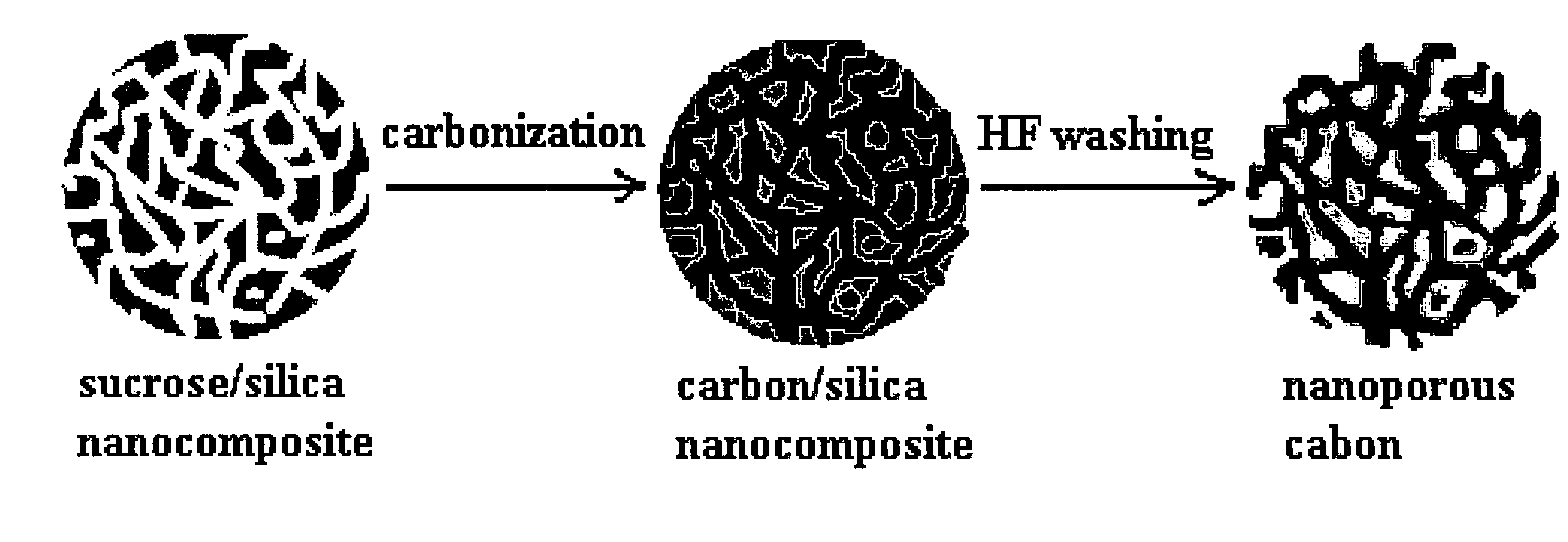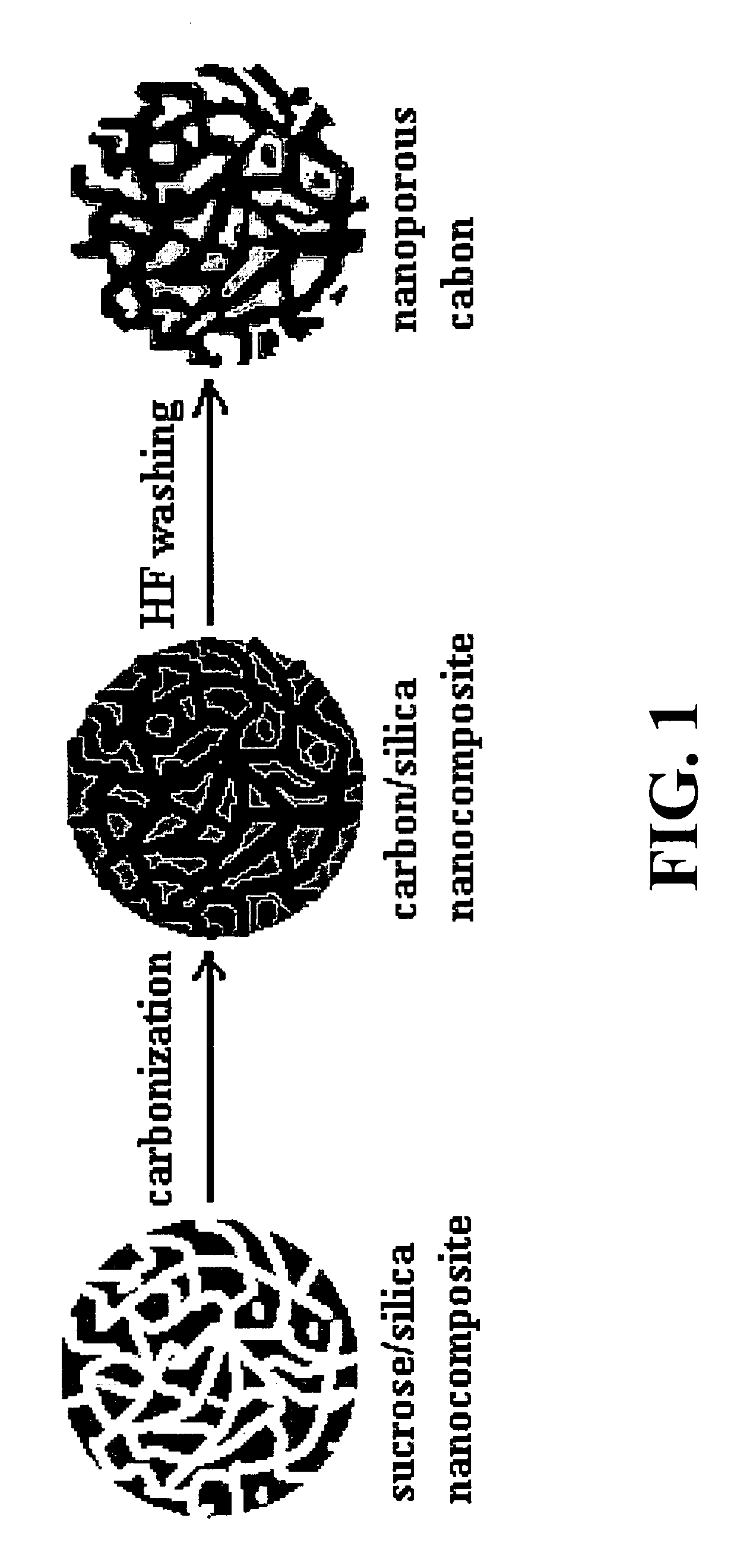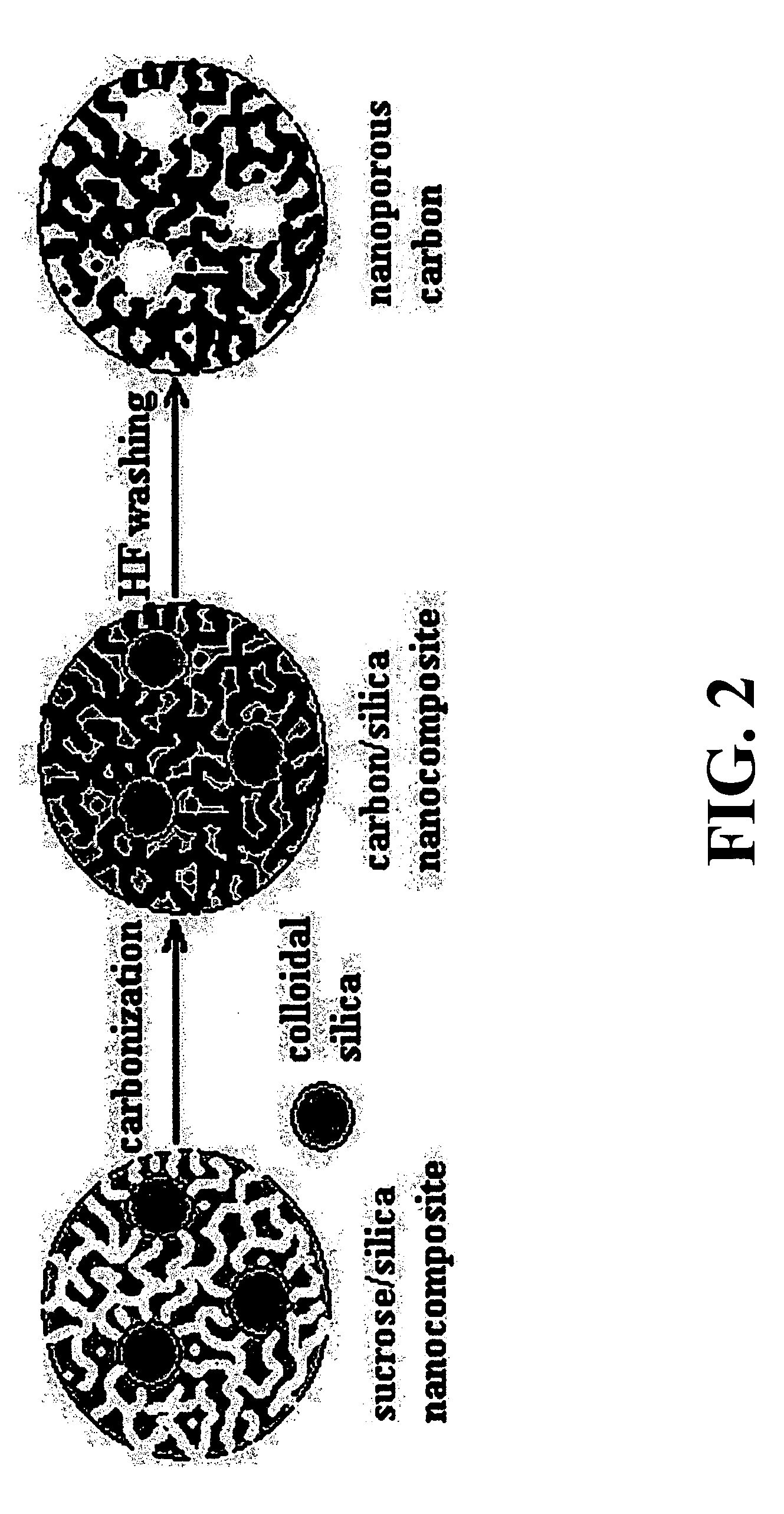Mesoporous carbon films and methods of preparation thereof
a technology of mesoporous carbon and film, applied in the field of mesoporous carbon films, can solve the problems of small pore diameter that can limit applications, two-step process is typically limited, and the difficulty of controlling the macroscopic morphology of the film
- Summary
- Abstract
- Description
- Claims
- Application Information
AI Technical Summary
Benefits of technology
Problems solved by technology
Method used
Image
Examples
example 1
Preparation of a Unimodal Mesoporous Carbon Film
[0063] About 2.1 g (about 0.01 mol, equivalent to about 0.6 g of SiO2) of tetraethyl orthosilicate (Aldrich), about 1.8 g (about 0.10 mol) of water, and about 0.21 g of 1 N HCl (about 0.0002 mol HCl were reacted at about 60° C. for about 6 hours. About 0.61 g of sucrose (about 0.00178 mol, equivalent to about 0.26 g of carbon) was then added to achieve a homogenous aqueous sol-gel composition. A sucrose / silica nanocomposite film was prepared by spin coating the sol-gel composition at about 2000 rpm onto a silicon wafer. The resulting sucrose / silica nanocomposite thin film was then heated at about 900° C. for about 4 hours under a nitrogen atmosphere to afford a shining black carbon / silica nanocomposite film having a calculated carbon to silica weight ratio of about 1:2.3. A mesoporous carbon thin film (Film C-4 in Table 1) was obtained by removing the silica from the carbon / silica nanocomposite films by washing the film with dilute aq...
example 2
Preparation of a Bimodal Mesoporous Carbon Film
[0069] A continuous mesoporous carbon film with hierarchical bimodal pore structure was prepared by incorporating colloidal silica particles as a secondary template, as illustrated in FIG. 2. About 2.1 g of tetraethyl orthosilicate (TEOS, Aldrich), about 2.0 g of water and about 0.51 g of 1 N HCl solution were reacted at about 60° C. for about 6 hours. About 0.6 g of sucrose was then added to achieve a homogenous sol-gel composition. Next, about 0.3 g of colloidal silica suspension (Nissan Chemicals, i.e., Snowtex-50, 20-30 nm, about 50% by weight in water) was added into the sol-gel composition with stirring and the mixture was ultrasonicated for about 5 minutes. A continuous mesoporous carbon film were prepared as described in Example 1, above.
[0070] The resulting hierarchical, bimodal mesoporous carbon film was characterized by TEM (FIG. 6) of the nanoporous carbon shows the presence of the larger, secondary pores (e.g., 20-30 nm p...
example 3
Evaluation Hydrogen Storage Capacity of a Unimodal Mesoporous Carbon Film of the Present Invention
[0071] A unimodal mesoporous carbon film of the present invention was prepared by the methods described above. In order to facilitate the measurement of its hydrogen storage capacity, the film was ground into a powder. The hydrogen storage capacity of the ground film was evaluated on a Micromeritics 2010 instrument. FIG. 7 shows the hydrogen adsorption isotherm of the powdered mesoporous carbon film at an absolute pressure between about 0 to about 850.2 mmHg and at a temperature of about 77 K. FIG. 7 clearly shows that the hydrogen adsorption increases as the pressure increases, and reaches a final maximum of 199.63 cm3 / g (STP H2) at pressure of about 850.2 mmHg. The calculated gravimetric storage capacity of the ground film was about 1.8 percent by weight.
PUM
| Property | Measurement | Unit |
|---|---|---|
| diameter | aaaaa | aaaaa |
| pore diameter distribution | aaaaa | aaaaa |
| diameter | aaaaa | aaaaa |
Abstract
Description
Claims
Application Information
 Login to View More
Login to View More - R&D
- Intellectual Property
- Life Sciences
- Materials
- Tech Scout
- Unparalleled Data Quality
- Higher Quality Content
- 60% Fewer Hallucinations
Browse by: Latest US Patents, China's latest patents, Technical Efficacy Thesaurus, Application Domain, Technology Topic, Popular Technical Reports.
© 2025 PatSnap. All rights reserved.Legal|Privacy policy|Modern Slavery Act Transparency Statement|Sitemap|About US| Contact US: help@patsnap.com



